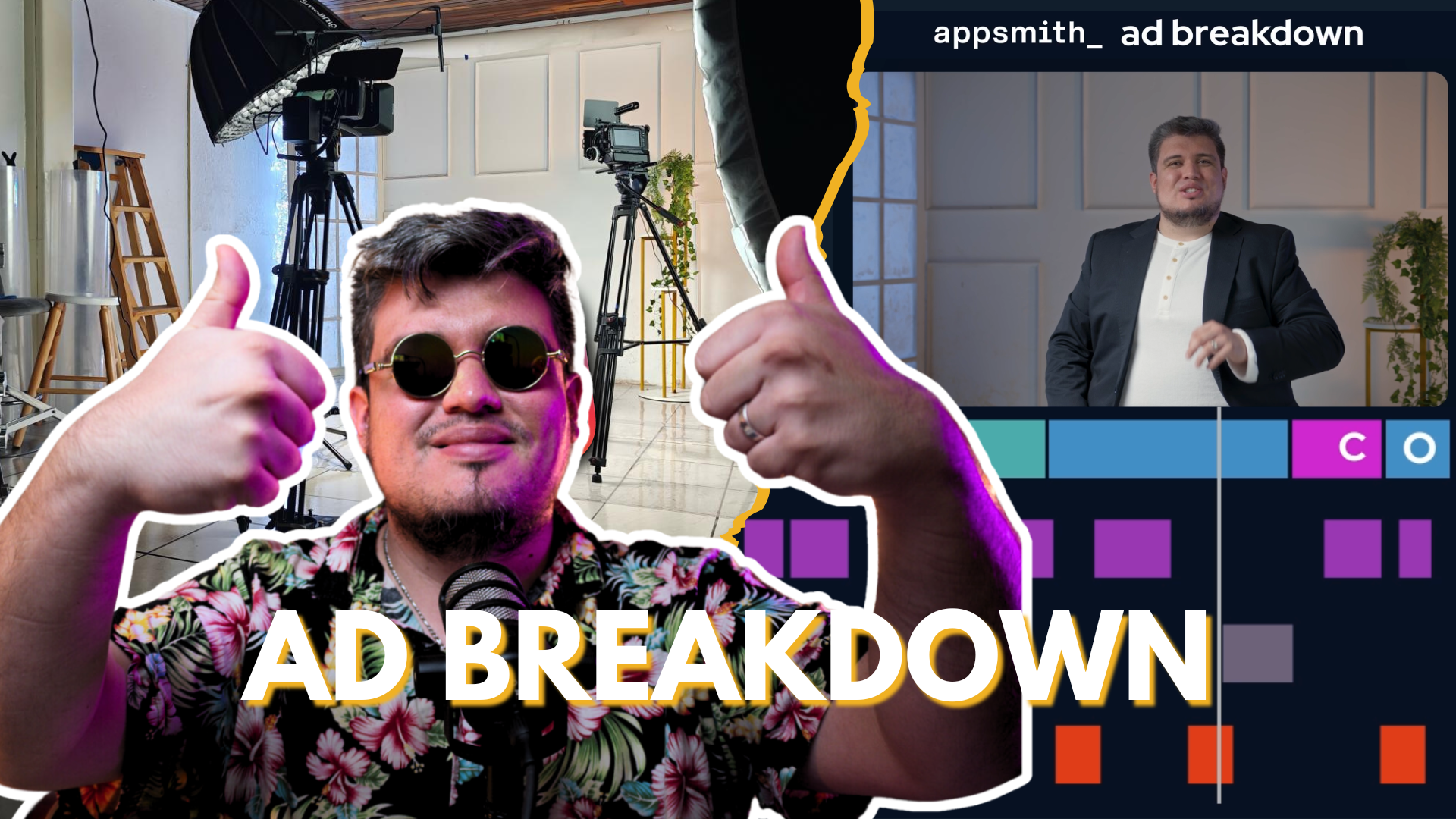Advises for Building Better Developer-Focused Videos from a Filmmaker
 Kevin Blanco
Kevin Blanco
As a senior DevRel advocate specializing in film and video for developers, I've produced hundreds of videos and frequently encounter the same question: "What's the most important thing for making engaging videos?" While there's no single definitive answer, I've broken down some crucial elements that contribute to creating compelling content for developers. Let's dive into the anatomy of an effective dev-focused video, starting with a video breaking down an example I recently produced.
The Script Structure: The Foundation of Engagement
At the heart of every great video lies a well-structured script. I've found success with a simple yet powerful format:
Hook: Start with a point of view that answers the question, "Why should developers listen to you?"
Problem-Solution Dynamic: Employ a 1-2-1-2 punch of problem-solution language.
Present the problem
Introduce the solution
Highlight the old way
Showcase the new way
The Power of "Old Way -> New Way": One of the most compelling elements in our script structure is the "old way -> new way" comparison. This approach is particularly effective for a developer audience because it directly addresses their pain points and offers tangible improvements.
This structure keeps viewers hooked, especially tech leaders looking to achieve their KPIs. End with a compelling offer that resonates with your audience. In my case, I end with "Build More, Code Less, and Ship Faster."
Visual Pacing: Keeping Eyes Glued to the Screen
Static videos are engagement killers. Maintain visual interest through:
Quick cuts
Smooth transitions
Dynamic b-roll
Each visual change should align with a new point, reinforcing your message and maintaining viewer attention. In today's world of short attention spans, visual variety reigns supreme.
Audio Quality: The Often Overlooked Essential
Never underestimate the power of clear, crisp audio. It's non-negotiable. Invest in:
A high-quality condenser microphone
If possible, proper room treatment for optimal sound
Like most of us, I don't have a soundproof studio, so being able to record a high-dynamic range of audio helps me treat it in post-production. That is why I use a 32-bit flat audio recorder. Then, I can remove background noise or any unwanted noise and normalize the audio levels, if you want to know how to do it here's a video tutorial:
Remember, subpar audio can undermine even the most visually stunning content.
Camera Angles: Elevating Production Value
Moving beyond the standard webcam setup is crucial for creating professional-looking, engaging content. Thoughtful use of camera angles can dramatically enhance your video's impact. Here's why it matters and how to do it effectively:
Why Multiple Angles Matter:
Visual Interest: Varied angles keep viewers engaged by providing visual stimulation.
Professionalism: It mimics the look of high-end productions, elevating your content's perceived value.
Emphasis: Different angles can highlight specific points or emotions in your script.
Pacing: Changing angles helps maintain a dynamic rhythm in your video.
Types of Shots to Consider:
Wide Shot: Sets the scene and gives context.
Medium Shot: The standard for presenting information, showing from the waist up.
Close-Up: Emphasizes emotions or details, which is great for important points.
Over-the-Shoulder: Useful for demonstrating software or processes on a screen.
B-Roll: Supplementary footage that adds visual interest and context.
Implementation Tips:
Plan Your Shots: Align different angles with key points in your script.
Rule of Thirds: Use this composition principle for more visually appealing framing.
Movement: Consider subtle camera movements (pans, tilts) for added dynamism.
Consistency: Ensure lighting and background are consistent across angles.
Equipment Considerations:
Multiple Cameras: Use 2-3 cameras for easy angle switching.
Quality Matters: Invest in good cameras capable of 4K resolution if possible.
Proper Mounting: Use sturdy tripods or mounts to ensure stable shots, you don't want to damage your equipment.
Remember, this isn't about creating a simple screen recording or using AI-generated talking heads. It's an investment in quality that sets your content apart. By thoughtfully incorporating various camera angles, you create a viewing experience that feels more like a high-end production, keeping your developer audience engaged and reinforcing your authority in the field.
Color Grading: Setting the Mood
Color grading is the process of altering and enhancing the colors of a video in post-production. It goes beyond simple adjustments to create a specific visual style that supports your message and brand. Here's why it's crucial:
Establishes Tone: Color influences emotions. A tech-focused palette with cool blues can evoke trust and professionalism.
Ensures Consistency: It creates a cohesive look across different shots and scenes, even if they were filmed under varying conditions.
Enhances Visual Appeal: Proper grading can make your footage look more polished and high-quality, elevating the perceived production value.
Directs Attention: Using strategic color can guide the viewer's eye to important elements in your video.
Reinforces Brand Identity: Consistent color schemes across your videos help build a recognizable brand.
In this video, we used:
Cool blues for a tech-friendly vibe
Warm accents for approachability
Consistent grading from intro to CTA
A thoughtful color grade ties everything together and significantly boosts perceived production value.
Call-to-Action (CTA) Placement: The Soft Sell
In developer-focused content, the approach to CTAs must be nuanced and respectful of your audience's intelligence. Here's how to master the art of the soft sell:
Why Traditional CTAs Often Fall Flat with Developers:
Developers are typically skeptical of hard sells
They value substance over promotional content
Abrupt or pushy CTAs can erode trust
The Soft Sell Approach: Instead of relegating your CTA to the final seconds, weave it throughout your video:
Early Teaser:
Hint at the value you'll provide early in the video
Example: "By the end of this video, you'll learn how to cut your deployment time in half."
Mid-Video Value Reinforcement:
As you explain concepts, subtly tie them back to your offering
Example: "This problem is exactly what our tool addresses, as we'll see later."
Natural Integration:
Make your CTA a logical conclusion to the content
Example: "Now that we've seen the challenge, let's look at how our solution addresses it."
Final CTA:
By the time you reach the end, viewers should be primed and ready
Make it clear and actionable, but not pushy
Effective CTA Strategies for Developer Content:
Offer Value First:
Provide genuinely useful information before asking for anything
Example: "We've covered the basics. For a deep dive, check out our free ebook."
Use Developer-Friendly Language:
Speak their language; avoid marketing jargon
Example: "Ready to refactor your workflow? Clone our repo to get started."
Provide Options:
Not everyone is ready to buy. Offer different engagement levels
Example: "Join our Discord for more tips, or start a free trial if you're ready to dive in."
Make it Relevant:
Tie your CTA directly to the problem you've just solved in your content
Example: "Facing the same CI/CD challenges? Our tool is designed specifically for this."
Be Transparent:
Developers appreciate honesty about what they're getting into
Example: "No credit card required, and you can deploy to production from day one."
Measuring CTA Effectiveness:
Track click-through rates on different types of CTAs
A/B test various placements and wordings
Gather feedback from your developer community
Remember, the goal is to make your CTA feel like a natural, helpful next step rather than a sales pitch.
Conclusion
Creating engaging videos for developers is both an art and a science. By focusing on these key elements—script structure, visual pacing, audio quality, camera work, color grading, and strategic CTA placement—you'll be well on your way to producing content that resonates with your technical audience.
Remember, the goal isn't just to inform but to inspire action. Whether you're explaining a new technology, showcasing a tool, or sharing best practices, these techniques will help ensure your message doesn't just reach your audience—it sticks with them.
What's your experience with creating developer-focused content? Have you found other techniques particularly effective? Share your thoughts in the comments below, and let's continue this conversation!
Subscribe to my newsletter
Read articles from Kevin Blanco directly inside your inbox. Subscribe to the newsletter, and don't miss out.
Written by

Kevin Blanco
Kevin Blanco
Kevin Blanco is a multifaceted technologist who bridges the worlds of technology development and creative media. As a Senior DevRel Advocate, Google Developer Expert in Cloud and Workspace, and Google Champion Innovator, Kevin brings over 14 years of industry experience to the stage. His expertise spans cloud architecture, education technology, and innovative developer solutions. A certified Cloud Architect and Google Educator/Trainer, Kevin has delivered impactful sessions across North America and Latin America, establishing himself as a trusted voice in the global developer community. His unique background in cinema production and certification as a Davinci Resolve editor/colorist adds a creative edge to his technical prowess. Currently Senior DevRel at Appsmith in charge of Video Production, Kevin has spearheaded successful video initiatives that have significantly boosted community engagement and product adoption. His YouTube channel is a showcase of his ability to blend technical knowledge with compelling content creation. Kevin's passion for empowering developers, combined with his filmmaking skills, makes him an ideal speaker to inspire audiences to harness the true potential of video in DevRel and beyond.